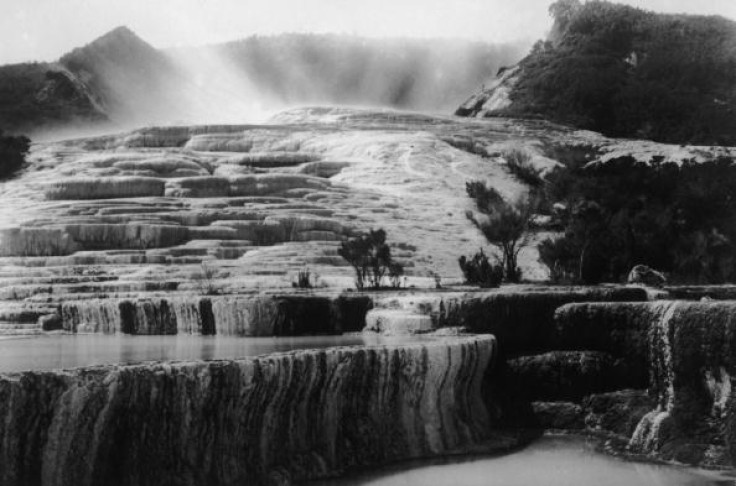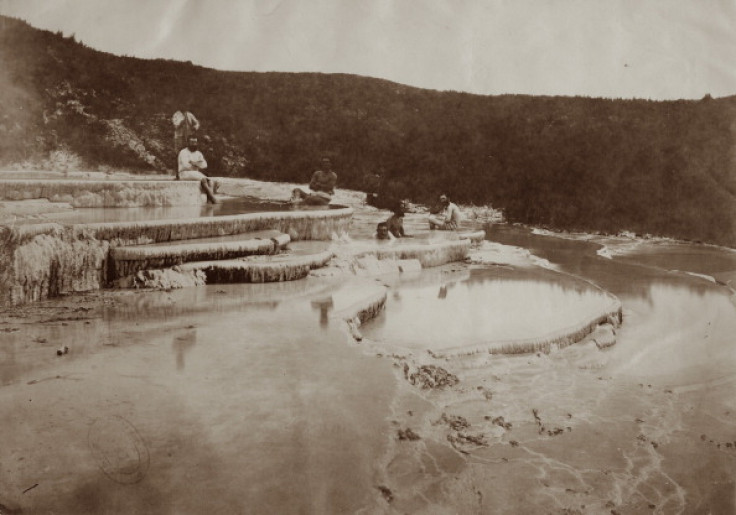Archaeology mystery: Did the pink and white terraces of Lake Rotomahana really disappear?

In 1886, the Pink and White terraces, one of New Zealand's natural wonders, were lost when volcano Mount Tarawera erupted.
Sometimes referred to as the "eighth wonder of the world", these large travertine terraces in pink and white colours were created by the deposition of minerals from hot water springs that flowed over them. Their magnificence made the country famous all around the world. Local Maori people called the place a "treasure" because they believed the waters had therapeutic properties.
In the aftermath of the volcano eruption, half a cubic kilometre of lakefloor material was ejected from the lake. Newly formed volcanic craters let out a muddy mixture of lake water and ashes, which covered the landscape in the vicinity of Mount Tarawera. A large, 100 meter-deep crater formed on the site of the terraces and filled with water to form a new Lake Rotomahana, much larger than the one that was previously in its place.
From then on, the terraces were nowhere to be seen, with people assuming they had either been destroyed or permanently buried under volcanic mud. For more than a century, the mystery of what happened to them has remained.
Traces of volcanic activity

A recent five-year-long study - led by New Zealand-based Geo-science research organisation GNS science - has offered hope that the terraces may not have completely disappeared. Published in the Journal of Volcanology and Geothermal research, the findings suggest that remnants of the Pink and White Terraces may survive at the bottom of the new Lake Rotomahana.
Thanks to range of new technologies never used before on the site, they conducted an in depth analysis of the lake's geological features, which included measurements of the water column, side-scan sonar, seismic surveys, underwater photography and surveys of gas plumes and the amount of heat entering the lake.
This allowed the scientists to create the most precise image of Lake Rotomahana floor up to now. They found traces of volcanic activity dating back to the 1886 explosion, such as geological faults and small craters in the lake floor which were emitting gas bubbles.
Terrace geological features
More importantly, they also uncovered geological features which may be more specifically associated to the terraces. Side-scan sonar images reveal unusual rocky outcrop located in the correct former position of the Pink Terraces, which could be fragments of the ancient structures.
Heat flow measurements also suggest unusual, particularly intense geothermal activity in the lake. The scientists say this could be evidence that the pink terrace hydrothermal system survived the eruption and is very active today.
Both of the recent findings are exciting first steps in uncovering the whereabouts of the long-lost geological wonder. Although the scientists believe the majority of the terraces were destroyed during the eruption, it is possible that more small fragments of the terraces may be found, thanks to modern technology.
© Copyright IBTimes 2024. All rights reserved.






